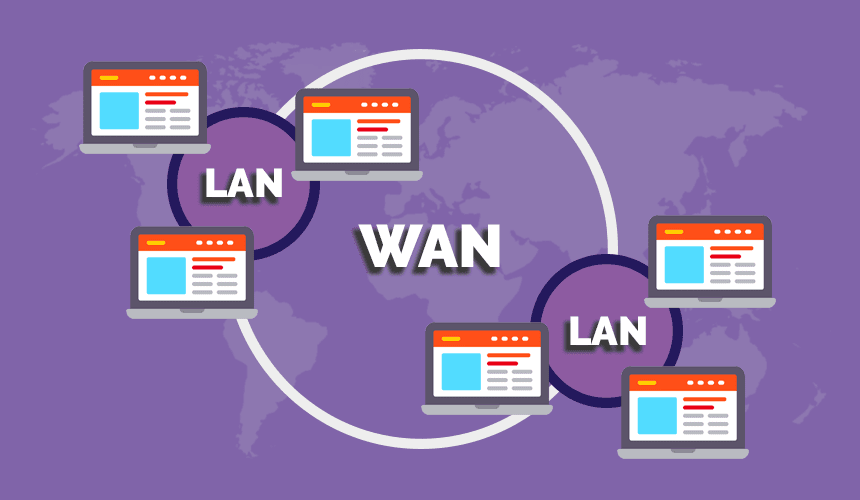Wan and Lan

A LAN, abbreviated from Local Area Network, is a network that covers a small geographical area such as homes, offices, and groups of buildings.
Whereas a WAN, abbreviated from Wide Area Network, is a network that covers larger geographical areas that can span the globe.
An example of a widely used WAN is the Internet, which is a collection of tens of thousands of networks that connects tens of billions of devices.
Local Area Networks predominantly use Ethernet technology, which is a group of networking technologies that dictates how data is transmitted over the physical media, with the most common media being CAT# cabling.
Local Area Networks can use both Layer 1 and Layer 2 devices; Layer 1 devices include HUB’s and repeaters and the Layer 2 devices that can be used are switches and bridge devices. While LAN’s use Layer 1 and Layer 2 devices, WAN’s operate using Layer 3 devices such as multi-layer switches and routers.
LAN’s are typically cheaper than WAN’s to both implement and maintain as the equipment required for Local Area Networks is less expensive, however, you can be more cost-efficient when setting up a WAN if you were to use VPN’s.
A LAN that is implemented well can bring multiple benefits to an organization such as high fault tolerance, scalability, security as well as fast and reliable speeds.
Local Area Networks have higher bandwidth than Wide Area Networks, as well as being able to transmit data at much faster speeds.
This is mainly due to the distance the data needs to travel as well as restrictions in place, such as an ISP’s speed restrictions over leased lines. That’s why many businesses use high-speed internet service providers.
Another important factor that determines how fast data can be transmitted over the network is dependent on hardware and cable quality, in addition to the data transferability of these also having an effect.
Local Area Networks are more secure than Wide Area Networks due to how WANs transmit the data and how far the data would need to travel.
A WAN is usually not owned and maintained by a single organization/entity like LANs are, therefore you have much less control over the network.
However, you are able to better secure your data over WANs using security features such as VPNs and IPsec.